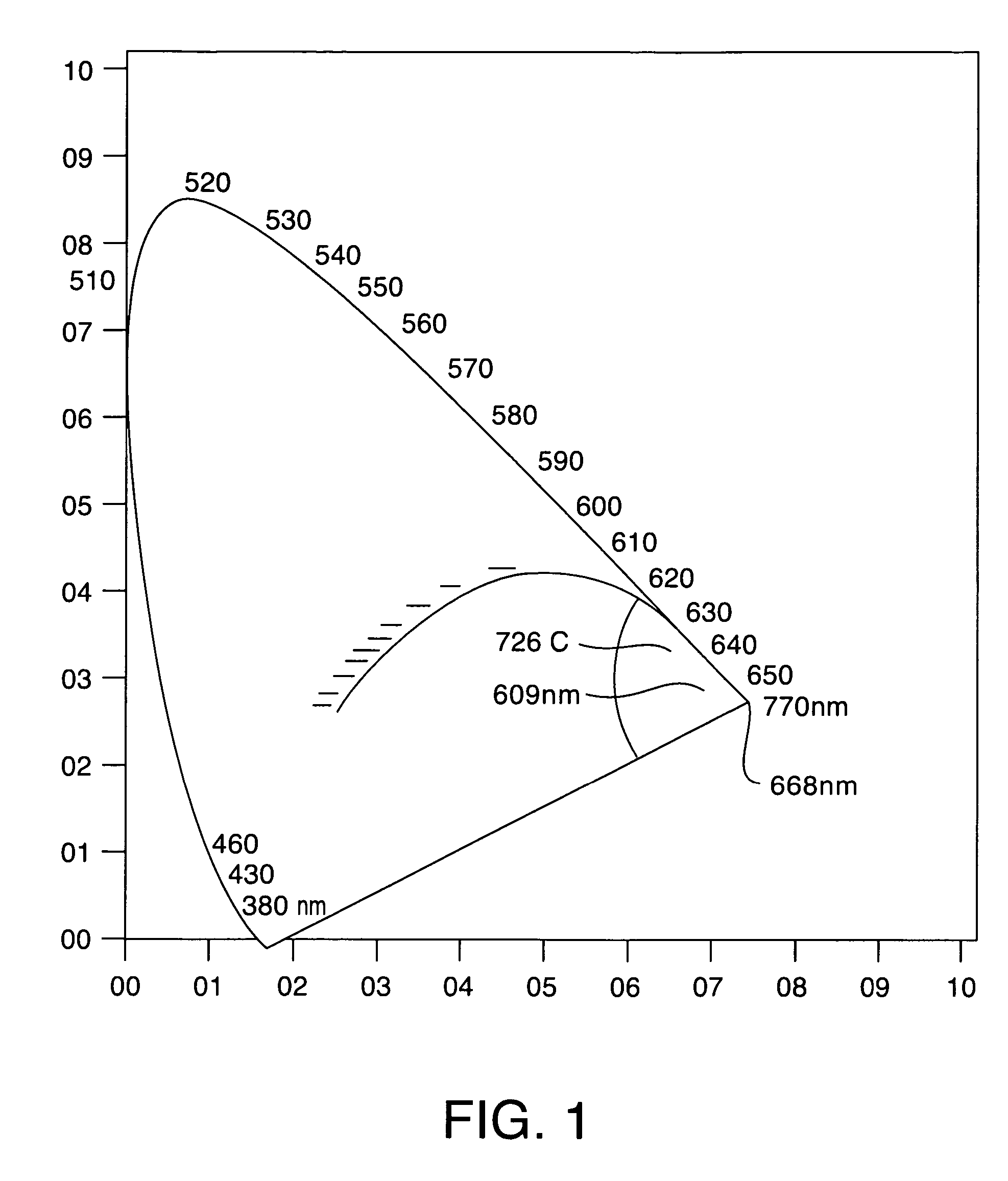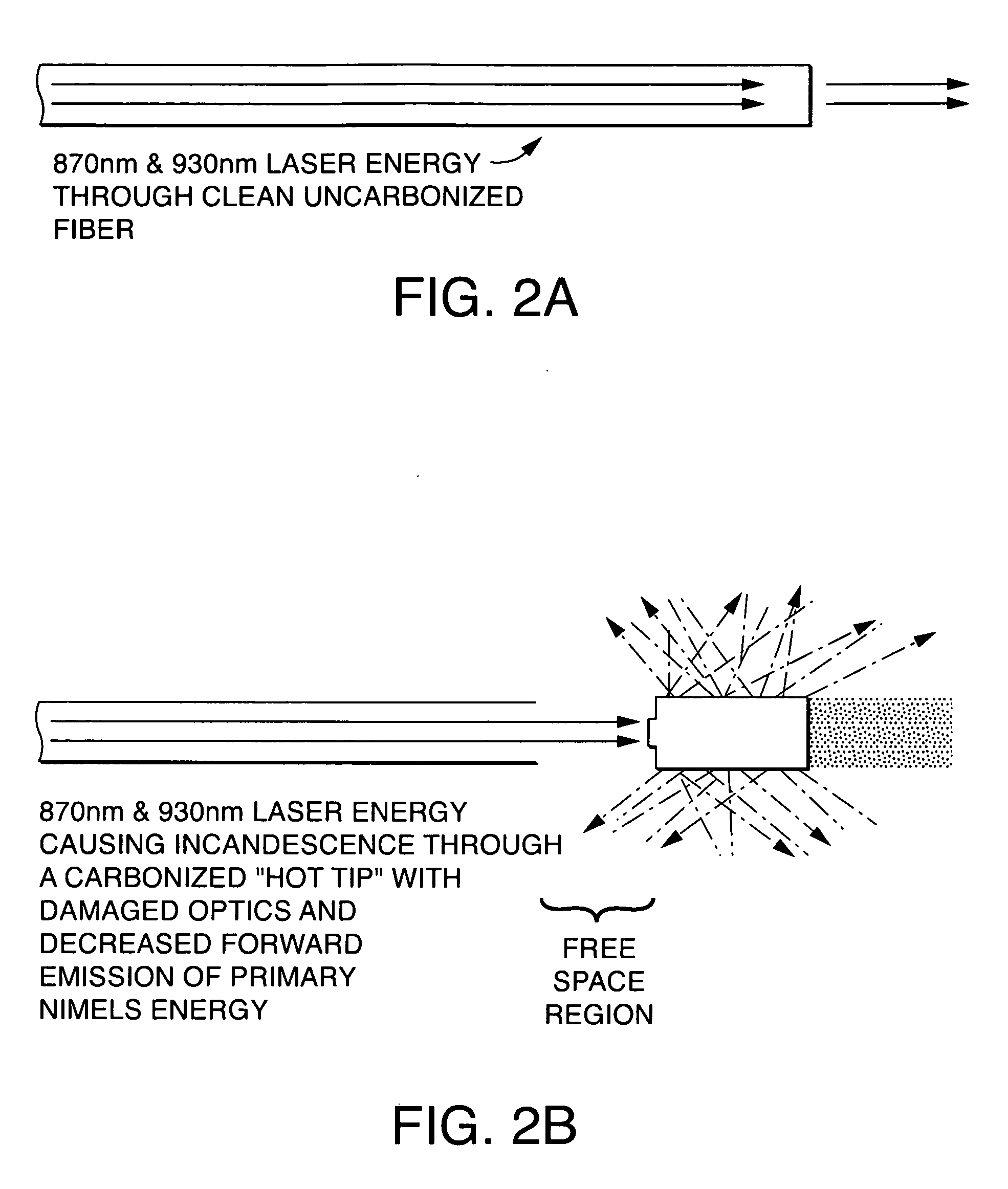Optical biofilm therapeutic treatment
a biofilm and optical technology, applied in the field of biofilms, can solve the problems of increasing the treatment cost of patients, affecting the treatment effect of patients, and causing human and animal diseases, and achieve the effect of minimizing unwanted hyperthermia (heat and burning)
- Summary
- Abstract
- Description
- Claims
- Application Information
AI Technical Summary
Benefits of technology
Problems solved by technology
Method used
Image
Examples
example 1
Treatment of an Infected Wound
[0101] On day one of the treatment, the biofilm in the wound or foot-ulcer is dyed with Methylene Blue solution or equivalent, and the output power of a NIMEL system is increased enough to generate an “incandescent tip” in an optical therapeutic treatment device 10 for targeting live biofilms, as shown in FIG. 9. The incandescent energy generated at the incandescent tip is then applied to the target area. The area is then debrided and irrigated with the tissue debridement brush 40 as shown in FIG. 10.
[0102] On day two through seven of treatment, the optical power (i.e. the primary NIMEL photons with minimal heat deposition) of the NIMEL system is employed (through a different handpiece) to penetrate healing wound and kill any remaining bacteria, as shown in FIG. 11, thereby allowing tissue healing, with the dosimetry calculated with the algorithm disclosed above.
[0103] The patents, published applications, and scientific literature referred to herein ...
PUM
 Login to View More
Login to View More Abstract
Description
Claims
Application Information
 Login to View More
Login to View More - R&D
- Intellectual Property
- Life Sciences
- Materials
- Tech Scout
- Unparalleled Data Quality
- Higher Quality Content
- 60% Fewer Hallucinations
Browse by: Latest US Patents, China's latest patents, Technical Efficacy Thesaurus, Application Domain, Technology Topic, Popular Technical Reports.
© 2025 PatSnap. All rights reserved.Legal|Privacy policy|Modern Slavery Act Transparency Statement|Sitemap|About US| Contact US: help@patsnap.com



